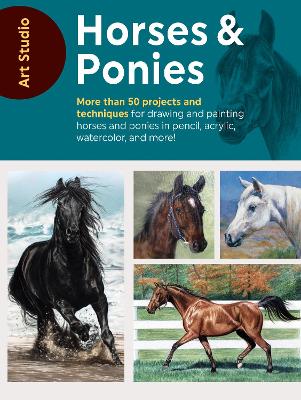Reviewed by annieb123 on
Art Studio: Horses & Ponies is a tutorial guide for all things equine. This is an ongoing series based on the same format: specific subjects (dogs, faces, horses, flowers) with a built in tutorial guide for specific learning projects using a wide variety of media.
Released 19th March 2019 by Quarto on their Walter Foster imprint, it's 144 pages and available in paperback format.
This is a clearly written and accessible book with a logical layout. The first chapter (12% of the page content) is a very condensed introduction to tools and associated media (lifting, granulation, and masking fluids). The included intro is not meant as a primary instruction, so is more suited to intermediate or advanced artists who are already familiar with the techniques. The following chapter (10%) covers basic techniques for pencil, acrylic, oils, pastels, and watercolors. There are also sub-chapters with more in-depth equine anatomy (eyes, features, anatomy, and proportion).
The following 6 chapters include many small tutorial projects with step-by-step instructions. These will be familiar to everyone who has used a similar guide in the past.
This one is well written and meticulously illustrated. The graphics are lovely (see cover). This is mostly a technique manual for developing a specific drawing and painting skill set which can also be applied to other subjects, if desired.
Four stars. I love these guides. It would make a good (and popular) choice for library or art classroom use.
Disclosure: I received an ARC at no cost from the author/publisher for review purposes
Reading updates
- Started reading
- Finished reading
- 22 March, 2019: Reviewed
